Vinyl Siding Colors: Tips for Picking the Perfect Palette
Industry pros share their insights for getting a timeless exterior color scheme that fits your home.
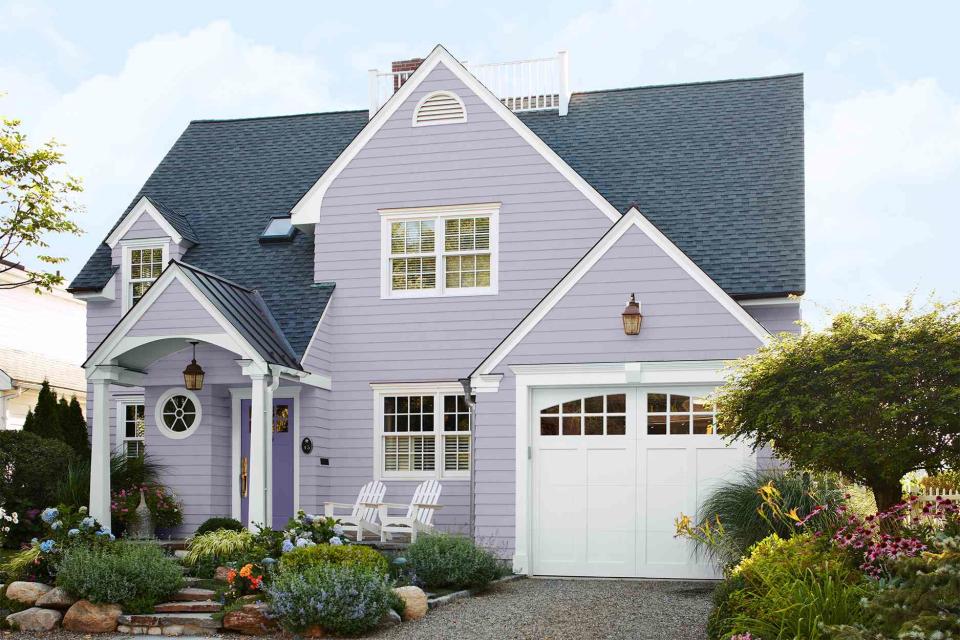
Better Homes & Gardens / Dana Gallagher
Vinyl siding is low-maintenance and durable, so you'll want vinyl siding colors designed to last. Vinyl siding products generally offer a palette of earthy, neutral colors, like beiges, whites, browns, grays, greens, and blues in both warm and cool tones. Vinyl siding is primarily offered in lighter shades, though darker, more saturated colors are also available as deep, rich neutrals trend for home exteriors.
Related: 34 Incredible Before-and-After Exterior Home Remodels
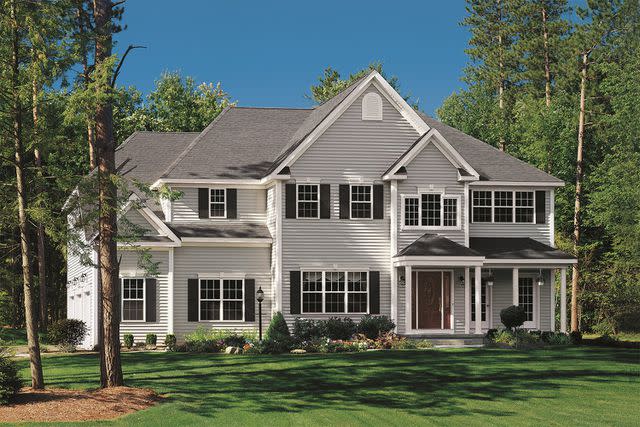
Alside
Can You Paint Vinyl Siding?
Changing vinyl siding colors can create a fresh face for an old house, but new vinyl siding isn’t the only way to update the exterior. Today, it’s easier to get a new look with paint. “In the past, if a homeowner wanted to change the color of their vinyl siding by painting, their color options were limited to the same range as their existing exterior color or a lighter one,” says Alexandra Sinclair, director of product information for Sherwin-Williams.
Sinclair says the problem with darker paint colors used to be that they would absorb more heat, causing the vinyl to warp. But technological updates have created products like Sherwin-Williams VinylSafe paint, where darker colors are no longer an issue, providing a new spectrum of paint colors to refresh vinyl siding.
Related: How to Pick the Best Exterior Paint Colors for Your Home’s Style
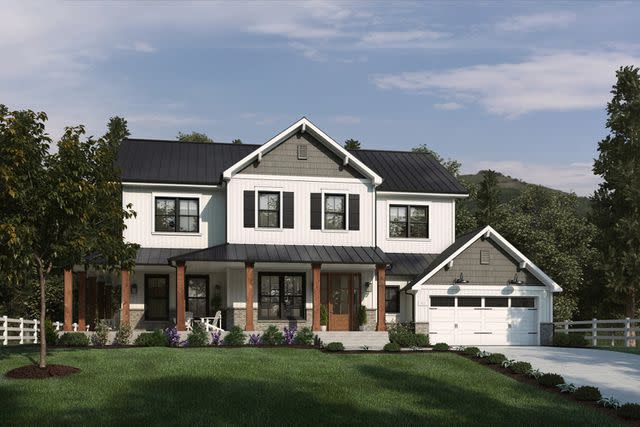
Ply Gem
How to Choose a Vinyl Siding Color That Works with Your Home's Style
Your house should be at home in its surroundings. Exterior colors should complement your style as well as your environment. Finding the right vinyl siding color includes taking into consideration the look you’re going for, as well as the home’s architectural style, building materials, and physical location.
1. Select a Color Scheme
"The first thing to consider when selecting a vinyl siding color is whether you wish to draw from a monochromatic or dramatic color scheme," says Chase Creighton, director of product management at Associated Materials. "The monochromatic option uses colors from the same family and tonal value, resulting in a subtle difference among elements. Essentially, it uses different shades of the same color." Creighton cites variations of beige as a traditional example of a monochromatic scheme, while a more modern approach might use blacks and grays. If the home has a mix of siding styles—for example, different styles for each story—subtle color variations can help textures stand out.
Alternatively, you can create contrast by incorporating different colors. For a traditional scheme, Creighton suggests deep blue siding and white or cream soffits and windows or a contemporary look that pairs dark brown or black siding with lighter gray and silver trim and accents.
Sue Wadden, director of color marketing for Sherwin-Williams, suggests deciding at the outset if you're going modern or traditional with your vinyl siding colors. A traditional scheme will stay true to the style and time period of the home, which can include historically accurate color palettes. "On the other hand, you may want to do the opposite and go fresh and modern," says Wadden. This can be a fun way to liven up an old home, stand out in the neighborhood, or better match your personal style. "Making that initial decision will help narrow down your list of [siding color] choices," says Wadden.
Related: 28 Exterior Color Combinations for Inviting Curb Appeal
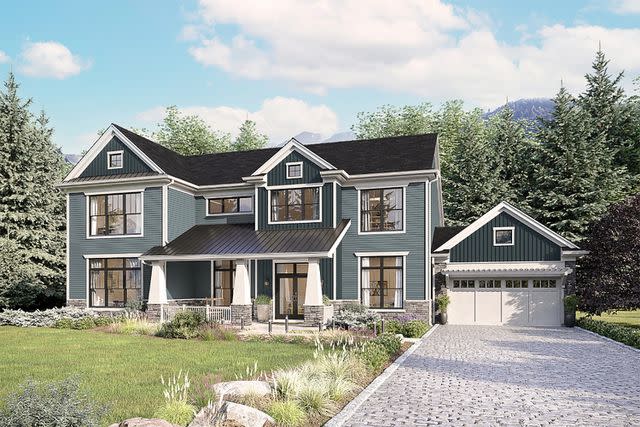
Courtesy of Ply Gem
2. Draw from Your Home’s Architectural Style
The style of your home is one of the most significant factors in selecting siding colors. Restrained colors complement the simple architecture and palettes that are hallmarks of classic styles like Colonial and Farmhouse. The most successful vinyl siding color selections pay attention to the key elements of the home's style.
Geographic Location
Some architectural styles and geographic areas have well-known historical color schemes that can inform your decisions. In other cases, strong color cues are inherent in the home's architectural style. For example, Victorian homes are usually more playful and bold in their colors. This is especially true for ornate details, but siding, too, can be colorful.
Similarly, with their smaller size and charm, cottage-style homes often embrace lighter hues. According to Deb Lechner, VP of marketing for Ply Gem Siding, Cape Cod homes often use soft, natural colors that almost look weathered. In coastal areas, siding becomes brighter, with vibrant pastels and blues.
Design Elements
Architectural styles may also feature design elements that lend themselves to color selections. Midcentury modern exteriors often incorporate wood accents that pop alongside creams and darker siding colors, says Lechner. Craftsman homes similarly showcase exposed beams, columns, and stone accents, which all play nicely with earthy shades. Lechner recommends muted, historic hues for Craftsman cladding, with a splash of color on areas like the gable or front door.
Contemporary homes often have strong lines, asymmetrical geometry, sustainable material selections, and green building principles. These homes generally use natural colors, both dark and light, so the siding doesn't compete with the visually stunning architecture and incorporates the natural environment.
Recognizing your home's style can also help you create a more modern look. For example, farmhouse styles commonly include white siding with black trim, a cool color palette, and a more traditional aesthetic. Creighton recommends brick-red vinyl siding with sand-colored soffits, accents, and clay-colored windows to create a more dramatic color palette. The bolder, warmer colors work together, thanks in part to the simplicity of the architecture.
Roofing Colors
Roofs can also play a major part in the home's color considerations, especially in house styles where the roof is prominent, like A-frame, Colonial, ranch, and Dutch Colonial. Be sure to consider the roof color when choosing your trim, accent, and vinyl siding colors.
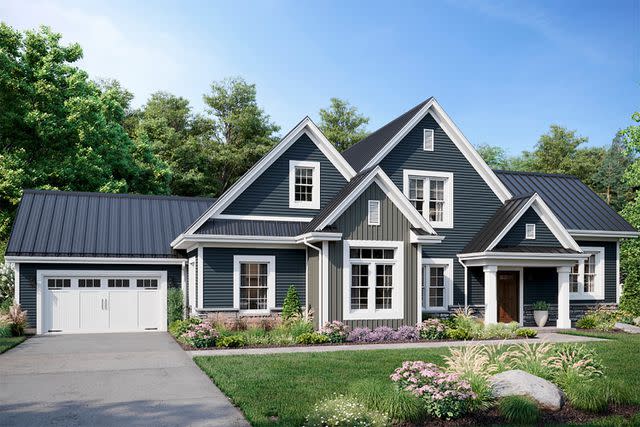
Courtesy of Ply Gem
3. Consider Your Surroundings
“Play off your neighbors’ homes and use complementary colors to achieve a cohesive look,” says Wadden. “For example, in a neighborhood of Craftsmans, houses tend to be painted deep red, green, or blue.” Nearby siding and exterior colors will give you a sense of what’s common in the area while also providing inspiration, which can be especially productive in communities with multiple homes of the same style. Regional impacts on siding colors should also be considered. “Bright colors work well where regionally popular, such as on coastal cottages and Cape Cods,” says Creighton.
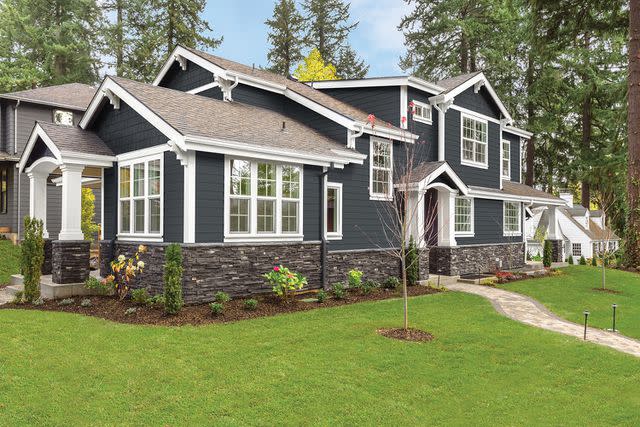
Courtesy of Alside
4. Do Your Research
Architects and designers can help you identify style- and period-appropriate colorways for older homes, especially those frequently working in older neighborhoods. For homeowners who enjoy digging into the details themselves, a local historical society, neighborhood commission, or other local or historical neighborhood and building organizations may have resources to share. Architects, designers, and builders are also sources for updating newer homes. For both, the key is to look for someone who is a good fit for the style you like and the type of home you have.
You can also look to vinyl siding brands and paint companies. In addition to keeping a pulse on what’s trending, they also know (and showcase) what’s popular over time. They might also have insight into regional, historical, or style-specific color solutions. For example, Sherwin-Williams America’s Heritage Palette is based on historical home exteriors.
Many digital tools can help you imagine new vinyl siding colors on your home. Both Alside and Plyg Gem have visualizers so that you can try out everything from monochromatic to traditional to contemporary colorways. It’s a great way to discover what you like (or don’t).
Related: 24 Exterior Color Schemes for Every Architectural Style
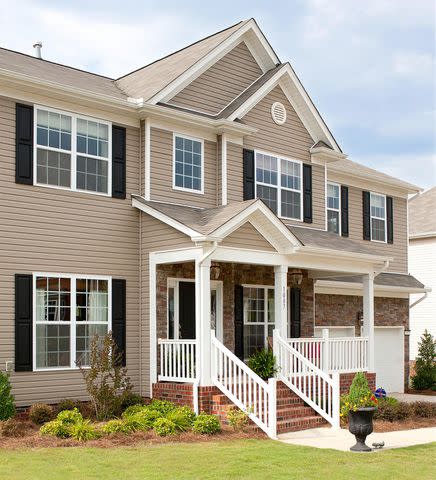
Better Homes & Gardens / Robert Brinson
Timeless Exterior Color Schemes for Vinyl Siding
The most common exterior color schemes are those that feel ageless. “Avoid anything too trendy that will date the house more quickly,” says Lechner. “If you plan to sell, use classic colors that have a broad appeal.” According to a 2022 survey from Alside, blue hues and darker gray colors top vinyl siding color trends, but traditional whites and grays remain strong. We asked the pros for their picks on tried-and-true vinyl siding colors.
White Siding
White vinyl siding with white trim will always stand the test of time, according to Lechner. For an elevated look, Lechner recommends incorporating accent siding styles, such as shake or board-and-batten, in a particular area like gables but in the same white color. Use black, gray, or deeper colors on shutters to contrast the all-white siding. White vinyl siding with black accents is an easy pairing that can be modern or traditional, depending on the style of the house and the use of accents. “Black accents pair well with white siding and soffit for a clean and modern look, which is trending on Craftsman, Prairie, and contemporary style homes,” says Creighton. This palette is popular for farmhouse styles as well.
Related: The Top 2023 Exterior Paint Color Trends to Try on Your Home
Green or Blue Siding
A colorful vinyl siding paired with white trim, ranging from warm to cool, is another popular formula that continues to stand the test of time. “The most popular trim color remains white,” says Lechner.
Pair white or cream trim with green siding for a classic combination. “Green is a classic exterior color, but a sage green with a hint of gray modernizes the hue and connects it to nature,” says Wadden. For a more contemporary style, she recommends replacing the white trim with a shade of sage.
Blue vinyl siding with white trim is another traditional color scheme. The darker the blue, the more dramatic the exterior.
Gray or Brown Siding
Lechner also points to gray vinyl siding with white trim as a classic neutral pairing that is consistently popular. Available in dark and light shades, gray can navigate the tonal color spectrum and support multiple building materials, from red brick to brown stone veneers or exposed natural wood. Wadden recommends adding a yellow door to this scheme.
Vinyl siding in shades of brown, beige, and related neutrals is popular for its adaptiveness to any home style. “In general, I love the look of heavier hues like browns for siding when paired with lighter, muted accent colors for trim,” says Wadden, who suggests mahogany shutters and a deep gray door.
Exterior Accent Colors
Exterior color schemes incorporate one or more accent colors, which can be used to highlight (or hide) other elements of the home's architecture, such as eaves, shutters, gables, window trim, gutters, and roofing.
For any style or exterior scheme, a brightly colored door is a timeless choice. It adds a touch of curb appeal that feels appropriate for even the most dignified architectural styles. Plus, it's a stellar way to incorporate the many brighter colors not typically part of vinyl siding palettes.
Garage doors are an exterior feature that can play a big role in how a house looks from the street. Choose a paint color that coordinates with the trim or front door color for a cohesive look, and consider updating your garage door if it's worn or outdated.
For more Better Homes & Gardens news, make sure to sign up for our newsletter!
Read the original article on Better Homes & Gardens.

